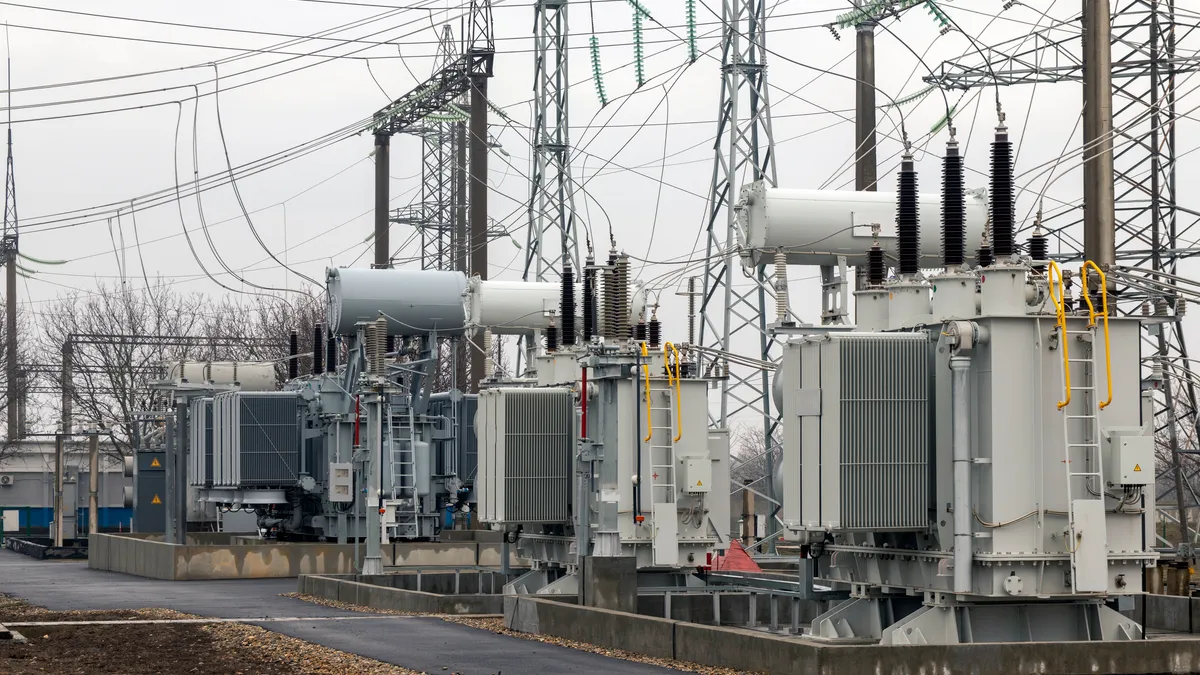President Joe Biden on Monday proposed a $7.3 trillion budget for fiscal year 2025 that includes funding and tax increases that could affect utilities and others in the power sector.
“The budget protects and builds on this monumental progress [of the Inflation Reduction Act and the bipartisan infrastructure law], making pro-growth investments in clean energy across the nation, cutting energy bills for families, creating good paying jobs, and safeguarding and modernizing American communities and infrastructure,” the White House said in a budget summary.
The proposal sets the table for the House of Representatives and Senate to draft the next federal spending plan in the months leading up to a presidential election. Congress is still working on appropriation measures for FY 2024, which started on Oct. 1.
Here are some power sector highlights from the proposed budget.
DOE’s ARPA-E program faces 4.3% cut. The Department of Energy's Advanced Research Projects Agency-Energy, known as ARPA-E, would see its budget fall to $450 million from $470 million under the proposal.
The Department of Energy non-defense related spending — which accounts for about 35% of the department’s overall budget — would increase to $17.9 billion, 6% above FY 2023 enacted levels, according to a DOE budget summary.
Other DOE highlights include:
- A 16% hike to $574 million for DOE’s State and Community Energy programs;
- A 57% jump to $102 million for the Grid Deployment Office, including $35.5 million for transmission planning and permitting, and $30 million for microgrids;
- A 4.9% bump to $141.7 million for the Energy Information Administration;
- An 8% increase to $3.1 billion for the Office of Energy Efficiency and Renewable Energy, with increases for research and development into renewable energy grid integration, wind energy and geothermal; and
- A 10% decrease for nuclear energy research and development.
FERC to explore using AI. The Federal Energy Regulatory Commission — which crafts its own budget — proposed increasing its FY 2025 budget by 4.6% to $532 million from FY 2023 enacted levels as it plans to expand its staff by 4.5% to 1,576 full-time equivalents, the agency said in its Congressional budget request.
FERC’s budget request includes $152.5 million, up 32% from FY 2023 enacted levels, to support information technology investments. The agency aims to test the feasibility of using artificial intelligence in operations, according to the budget request.
“The utilization of AI promises to enhance efficiencies across various FERC program offices, ultimately leading to substantial benefits in the execution of the Commission’s mission,” FERC said. Among its duties, FERC monitors power and natural gas markets for possible market manipulation.
FERC, an independent agency, recovers its expenses through annual charges and filing fees on the industries it regulates.
EPA seeks to bolster $27 billion carbon reduction fund. Biden proposed increasing the Environmental Protection Agency’s budget by nearly 20% to $12.1 billion, according to a summary of the EPA’s proposed spending plan.
The plan calls for an extra $5 million for administrative support to the $27 billion Greenhouse Gas Reduction Fund. “With enhanced administrative support, EPA will be able to more efficiently and effectively administer competitive grants to mobilize financing and leverage private capital for clean energy and climate projects that reduce GHG emissions with an emphasis on projects that benefit low-income and disadvantaged communities,” the agency said.
Biden’s proposed budget gives the EPA an additional $89.9 million and 193 FTEs over the FY 2023 enacted level to set climate and clean air regulations and programs. It includes $47.5 million and 165 FTEs to finalize the review of national ambient air quality standards for power plants, as well as rules to limit GHG emissions from new and existing sources in the power sector and the oil and gas sector.
The EPA said it plans to develop new ways to use environmental justice analytics to help reduce the effects of the power sector on overburdened communities.
The proposed budget would give the EPA’s enforcement program $757 million, with an increase of $22.6 million and 38.3 FTEs above FY 2023 enacted levels to rebuild its inspector corps, which is EPA’s highest enforcement priority, according to the budget summary.
BOEM budget jumps 50% for renewables. Biden proposed increasing the Department of Interior’s Bureau of Ocean Energy Management’s budget by 22% to $268.2 million. It includes $64.5 million, a 50% hike, for renewable energy activities, including for siting and building offshore wind.
Biden also proposed to increase the Bureau of Land Management’s renewable energy management program by 77% to $72.5 million to better handle growing demand for renewable energy development and transmission infrastructure on federal land, according to a summary of the BLM’s proposed budget.
Corporate tax hikes on the table, again. In a move that could affect investor-owned utilities and others in the power sector, Biden proposed increasing the federal corporate tax rate to 28% from 21%. His previous efforts to increase the corporate tax rate failed.
Biden also proposed raising the Inflation Reduction Act’s corporate minimum tax rate on billion-dollar corporations to 21% from 15%.























